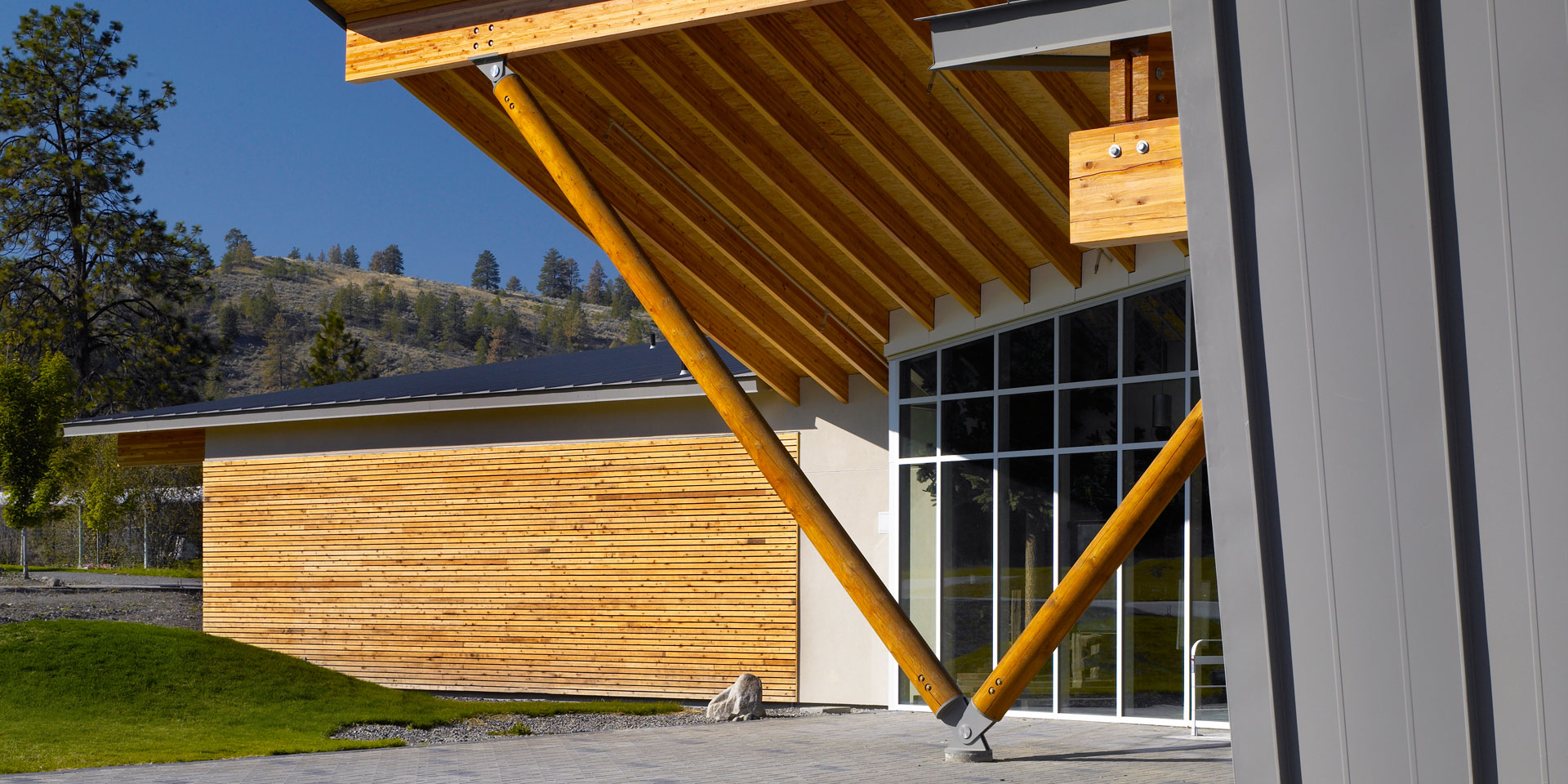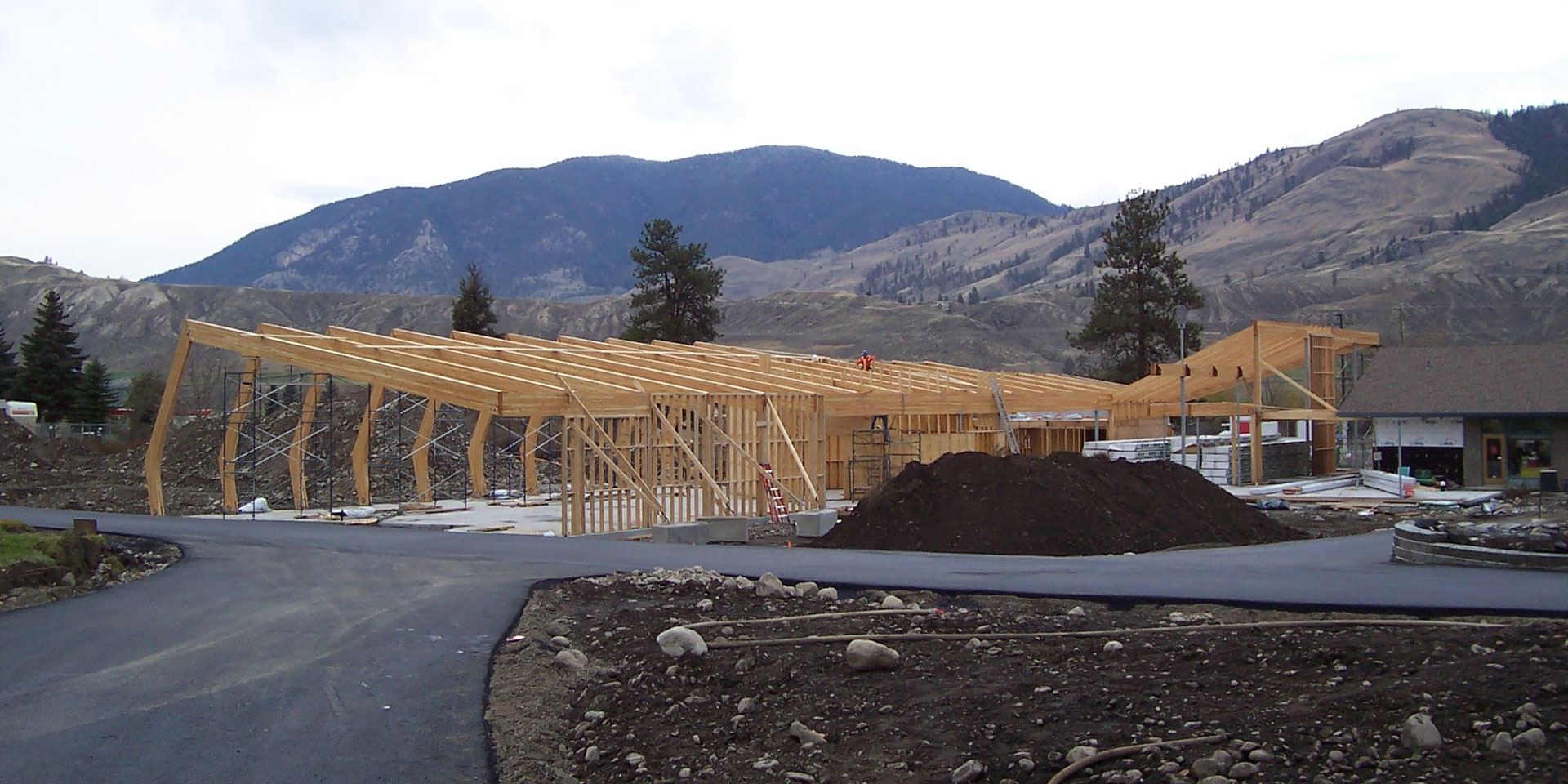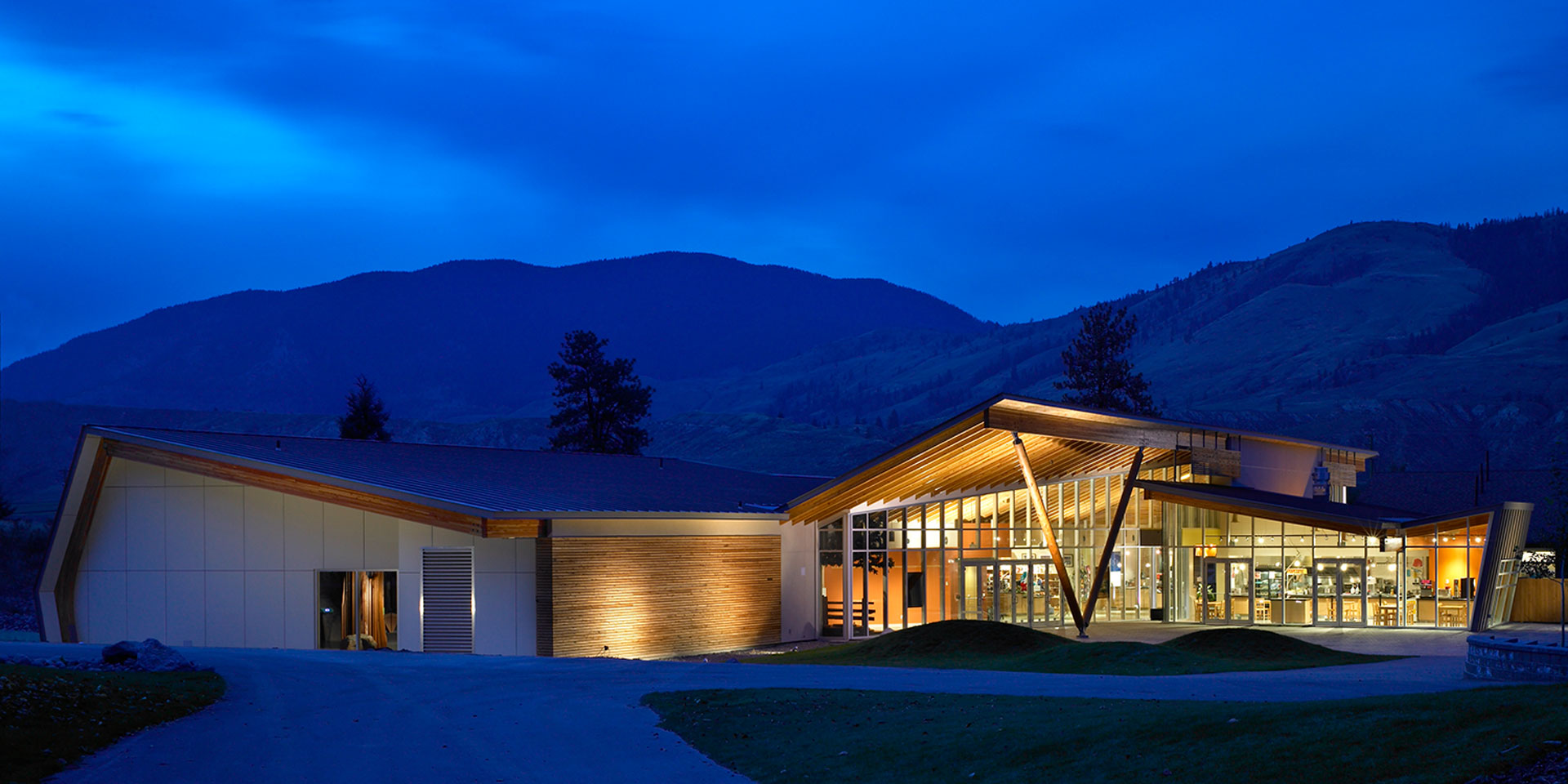
Location: Kamloops, BC, Canada
Status: Built
Year: 2006
Size: 1,200 sq.m
Type: Civic, Government, Office
Service: Architecture
Award: LEED Gold
Client: BC Wildlife Park
This 12,300 sq.ft Interpretive Centre is an addition to an existing Visitor Centre for this wildlife park. The Park’s mandate is in the process of changing to focus exclusively on indigenous species in British Columbia, their habitat and the many environmental issues that affect the natural environment of the Province. In keeping with this mandate, the design of the new Centre is highly sustainable, utilizing many innovative green design features, within a very challenging project budget, to achieve a LEED Gold Certification.
Among these innovations are demonstration projects for solar and wind energy systems. The heating and cooling for the building is from a geothermal system that utilizes an abandoned well for its source – greatly reducing capital costs and the disruption of the site that would result from the installation of a traditional geothermal system. Discharge water from the system charges a wetland for waterfowl and ultimately returns to an existing stream for spawning salmon and other wildlife habitat restoration. To bring the sustainability of the design full circle, waste material from the construction of the building was used in the fabrication of the exhibitry, greatly reducing material waste and virtually eliminating waste material from some major building components.
In addition to the interpretation of wildlife and wildlife habitat, the new Centre will include displays that highlight the sustainable design features of the building and educate the public on this important aspect of our built environment.”
The architectural design is shaped by the sun to maximize solar exposure in the heating season and limit solar intrusion in the cooling season. Innovative wood technologies were used for the building structure to economize on the use of natural resources.
One of the parameters for the design was that the operation of the Park and the existing Visitors’ Centre remain fully operational throughout the entire construction schedule and that a critical completion date be achieved to qualify for a major source of funding. These important objectives were achieved when the project was completed in the Spring of 2006.



